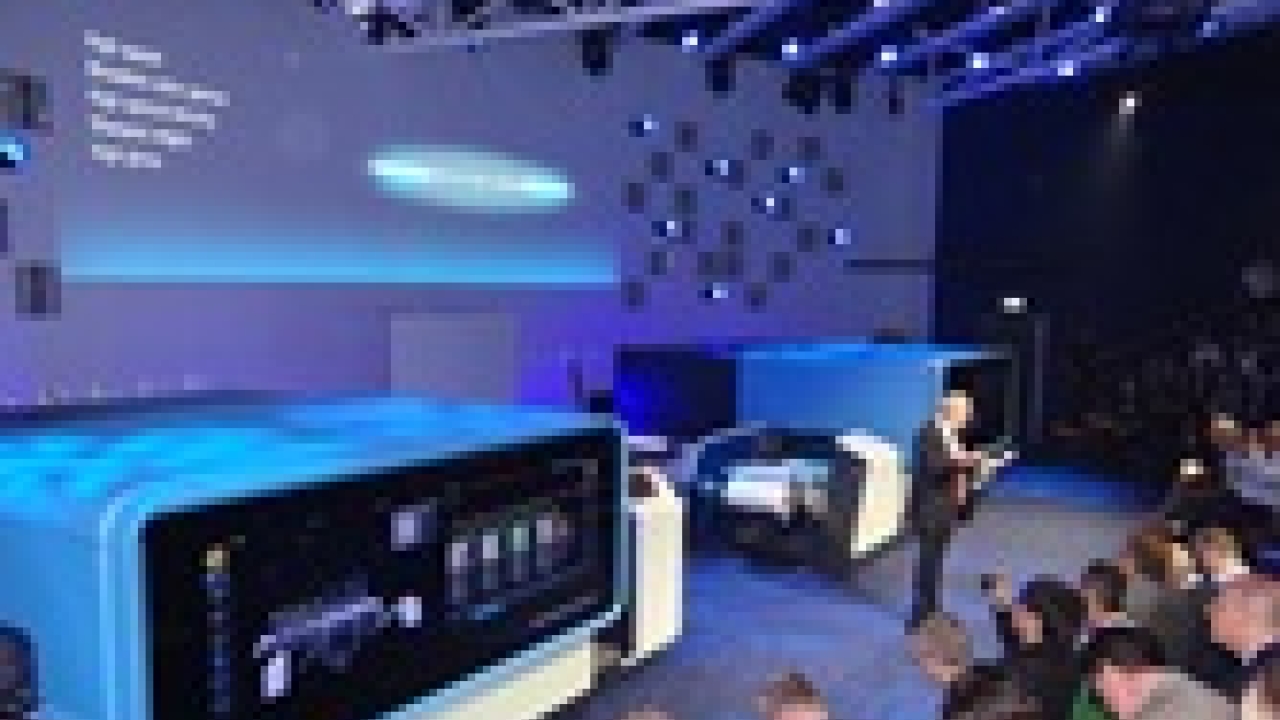Landa raises curtain at Drupa 2012

In what may well be the most significant launch at Drupa 2012, Benny Landa unveiled his latest nanographic technology on the eve of the Düsseldorf expo.
Claiming to have rethought the classic ink meets paper situation, Landa (pictured, top at the introduction of the nanographic process to the world) says his new series of sheet- and web-fed presses will raise the bar for digital print quality, and rival offset presses for speed and color gamut.
Using his own patented water-based NanoInk technology, the new Landa presses produce a sharper dot than is possible with offset. By accurately spraying billions of microscopic ink droplets onto a heated conveyor belt, by the time the ink contacts the substrate it is effectively dry, which prevents absorption and the consequent dot distortion. Essentially, the technique laminates a solid layer of ink, only 500 nanometers thick (a human hair is 100,000 nanometers), to any paper based or filmic substrate, without pre-treatment, and without the need for subsequent drying.
The three sheet-fed presses, respectively S5, S7 and S10, are all available in four to eight colors, range from B3 (20in) to B1 (41in) in format, and have stock capability from 60 to 400 gsm. Crucially, for the package printing market, the S10 can print at 6,500 sheets per hour on virgin or recycled board up to 1000-micron, or plastic foils.
The three web-fed presses, W5, W10 and W50, have web widths of 560mm, 1020mm and 560mm respectively, with the W10 aimed at packaging printers with its 200m/min speed on 12 - 250-micron film, or paper stock up to 300-micron. The W5 is suited to label stock, tube stock, aluminium foil and paper as well as plastic films and shrink sleeve applications.
For the operator, the interface resembles a giant i-Pad/tablet. The giant touchscreen display is split between press functions and job management, with realtime graphics showing the status of sheet feeding, transfer and delivery, while ink and paper levels are monitored too. Landa claims the automation allows an operator to run up to four presses simultaneously, because each has a “Vital Signs” mode to alert for any problem.
Concluding, he asked: ‘How can we prosper as media moves from traditional to digital?’ Believing that digital will not replace offset any time soon, but with run lengths declining, Landa says nanographic printing has a complementary role to play. With deliveries not due to begin until the back end of 2013, he quipped: ‘Full product development will be done before the press reaches the customer, this time!’
Read more on Landa's nanographic printing process here
Read more on Drupa here
Stay up to date
Subscribe to the free Label News newsletter and receive the latest content every week. We'll never share your email address.

